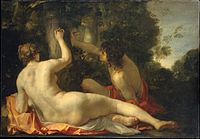
Ludovico Ariosto was an Italian poet. He is best known as the author of the romance epic Orlando Furioso (1516). The poem, a continuation of Matteo Maria Boiardo's Orlando Innamorato, describes the adventures of Charlemagne, Orlando, and the Franks as they battle against the Saracens with diversions into many sideplots. The poem is transformed into a satire of the chivalric tradition. Ariosto composed the poem in the ottava rima rhyme scheme and introduced narrative commentary throughout the work.

Orlando furioso is an Italian epic poem by Ludovico Ariosto which has exerted a wide influence on later culture. The earliest version appeared in 1516, although the poem was not published in its complete form until 1532. Orlando furioso is a continuation of Matteo Maria Boiardo's unfinished romance Orlando innamorato. In its historical setting and characters, it shares some features with the Old French La Chanson de Roland of the eleventh century, which tells of the death of Roland. The story is also a chivalric romance which stemmed from a tradition beginning in the late Middle Ages and continuing in popularity in the 16th century and well into the 17th.

Orlando Innamorato is an epic poem written by the Italian Renaissance author Matteo Maria Boiardo. The poem is a romance concerning the heroic knight Orlando (Roland). It was published between 1483 and 1495.

Jerusalem Delivered, also known as The Liberation of Jerusalem, is an epic poem by the Italian poet Torquato Tasso, first published in 1581, that tells a largely mythified version of the First Crusade in which Christian knights, led by Godfrey of Bouillon, battle Muslims in order to take Jerusalem. Tasso began work on the poem in the mid-1560s. Originally, it bore the title Il Goffredo. It was completed in April 1575 and that summer the poet read his work to Duke Alfonso of Ferrara and Lucrezia, Duchess of Urbino. A pirate edition of 14 cantos from the poem appeared in Venice in 1580. The first complete editions of Gerusalemme liberata were published in Parma and Ferrara in 1581.

Orlando, usually known in modern times as Orlando furioso, is an opera in three acts by Antonio Vivaldi to an Italian libretto by Grazio Braccioli, based on Ludovico Ariosto's epic poem Orlando Furioso. The first performance of the opera was at the Teatro San Angelo, Venice, in November 1727. It is to be distinguished from an earlier Vivaldi opera of 1714, Orlando furioso, set to much the same libretto, once thought to be a revival of a 1713 opera by Giovanni Alberto Ristori but now considered by Vivaldian musicologists to be a fully-fledged opera by Vivaldi himself.

Bradamante is a fictional knight heroine in two epic poems of the Renaissance: Orlando Innamorato by Matteo Maria Boiardo and Orlando Furioso by Ludovico Ariosto. Since the poems exerted a wide influence on later culture, she became a recurring character in Western art.
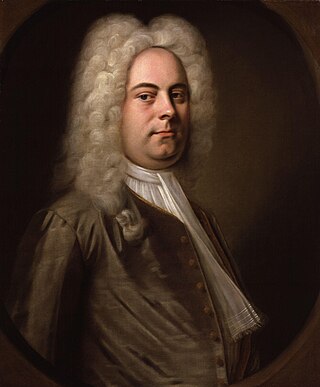
Orlando is an opera seria in three acts by George Frideric Handel written for the King's Theatre in London in 1733. The Italian libretto was adapted from Carlo Sigismondo Capece's L'Orlando after Ludovico Ariosto's Orlando Furioso, which was also the source of Handel's operas Alcina and Ariodante. More an artistic than a popular success at its first performances, Orlando is today recognised as a masterpiece.
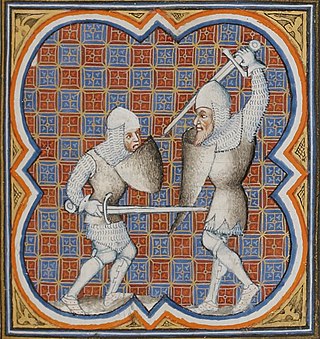
Ferragut was a character—a Saracen paladin, sometimes depicted as a giant—in texts dealing with the Matter of France, including the Historia Caroli Magni, and Italian epics, such as Orlando Innamorato by Matteo Maria Boiardo and Orlando Furioso by Ludovico Ariosto. In the tales, he was portrayed as physically invulnerable except at his navel/stomach, and was eventually killed by the paladin Roland.

Angelica is a princess in the epic poem Orlando innamorato by Matteo Maria Boiardo. She reappears in the saga's continuation, Orlando furioso by Ludovico Ariosto, and in various later works based on the two original Orlando pieces. The narratives are part of the Matter of France, a cycle of legendary history stories based on the adventures of Charlemagne and his paladins. She is mentioned in chapter 6 of Mary Shelley's Frankenstein (1818).

Ruggiero is a leading character in the Italian romantic epics Orlando Innamorato by Matteo Maria Boiardo and Orlando Furioso by Ludovico Ariosto. Ruggiero had originally appeared in the twelfth-century French epic Aspremont, reworked by Andrea da Barberino as the chivalric romance Aspramonte. In Boiardo and Ariosto's works, he is supposed to be the ancestor of Boiardo and Ariosto's patrons, the Este family of Ferrara, and he plays a major role in the two poems.
Brunello is a character in the Italian romantic epics Orlando Innamorato by Matteo Maria Boiardo and Orlando Furioso by Ludovico Ariosto. Brunello is a dwarf and a cunning thief who works for the Saracen army of King Agramante. He first appears in the second book of Orlando Innamorato where Agramante intends to invade Europe and defeat Emperor Charlemagne. He has been told he has no chance of success unless he has the young warrior Ruggiero on his side, but Ruggiero has been hidden in a secret garden by the wizard Atlante and the only way to reach him is by using the magic ring belonging to Princess Angelica. Brunello undertakes to steal it and sets off for the fortress of Albracca where he not only manages to snatch the ring but also robs King Sacripante of his horse and the female warrior Marfisa of her sword. Marfisa sets off in pursuit but Brunello evades her and gives the ring to Agramante, who rewards him with a kingdom. The Saracens find Ruggiero at Mount Carena where they see him behind a wall of glass. However, the wall is too steep and slippery to climb, so Brunello suggests they trick Ruggiero out. He gets them to play war games in the plain beneath the mountain. Ruggiero, with his inherent love of combat, cannot resist and despite Atlante's pleas he leaves the garden and begs Brunello for his horse and armor. Brunello only agrees if he will join their expedition against France, to which Ruggiero happily consents.
Sacripante is a character in the Italian romantic epics Orlando innamorato by Matteo Maria Boiardo and Orlando furioso by Ludovico Ariosto. Sacripante is the King of Circassia and one of the leading Saracen knights. He is passionately in love with Angelica and fights to defend her when she is besieged in the fortress of Albracca. His horse Frontino is stolen from underneath him by the cunning thief Brunello. In Orlando furioso he offers to become the wandering Angelica's protector but she evades him.
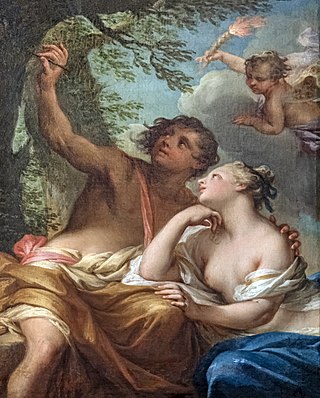
Andrea Casali was an Italian painter of the Rococo period. He was also an art dealer in England.
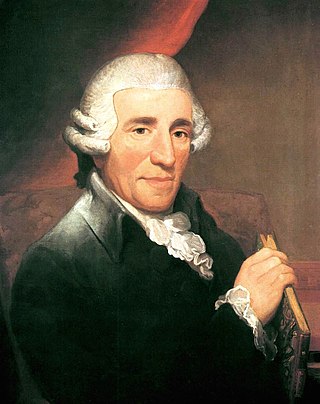
Orlando paladino, Hob. 28/11, is an opera in three acts by Joseph Haydn which was first performed at Eszterháza on 6 December 1782. The libretto by Nunziato Porta is based on another libretto, Le pazzie d'Orlando, by Carlo Francesco Badini, itself inspired by Ariosto's epic poem Orlando furioso. The opera was described as a dramma eroicomico and the plot mixes heroic and comic elements. It was Haydn's most popular opera during his lifetime. While in Prague, Mozart conducted a few performances of the opera. The Pennsylvania Opera Theater presented the United States premiere of the work at the Trocadero Theatre, Philadelphia, in March 1982 with John Gilmore in the title role. More recently, staged performances have been given in 2009 at the Berlin State Opera with René Jacobs conducting, and in 2016 at the Zurich Opera House conducted by Gianluca Capuano. In 2023, Il Giardino Armonico conducted by Giovanni Antonini gave concert performances at the Gran Teatre del Liceu and the Teatro Real, with cast including Emőke Baráth, Nuria Rial, Alasdair Kent and Josh Lovell.

Il Palazzo incantato or Il Palagio d’Atlante, overo La Guerriera Amante, or also Lealtà con valore is an opera in a prologue and three acts by the Italian composer Luigi Rossi. The libretto, by Giulio Rospigliosi, the future Pope Clement IX, is based on Ariosto's Orlando furioso. It was first performed in Rome in a lavish production at the Teatro delle Quattro Fontane on 22 February 1642. Rossi was criticised for giving too much music to his friend, the castrato Marc'Antonio Pasqualini, who played Bradamante, at the expense of the other roles. Some of the highly complicated stage machinery failed to work during the performance. Revived by Opera Dijon in a January 2021 online production.
Zerbino is a fictional character of the Matter of France. He appears in Orlando Furioso, the 16th-century Italian romantic epic by Ludovico Ariosto. He is the son of the King of Scotland, Duke of Ross, and brother of Ginevra. He takes part in a joust in Galicia, where Isabella, daughter of the King of Galicia, falls in love with him. In combat with the pagans outside Paris, he pursues Cloridano and Medoro. One of his Scottish knights stabs Medoro. Zerbino leaves Medoro for dead, but Medoro is later nursed back to health by Angelica. Zerbino is betrayed by Gabrina, and is about to be executed when he is rescued by Orlando and Isabella. After Orlando goes mad, Zerbino goes in search of him. Zerbino finds Orlando's arms and armour, which he has discarded in his madness. Mandricardo does battle with Zerbino and wins the sword Durendal from him.

Angelica and the Hermit is a 1626–1628 painting by Peter Paul Rubens. It shows an episode from canto 8 of Ludovico Ariosto's poem Orlando Furioso. It is now in the Kunsthistorisches Museum in Vienna.
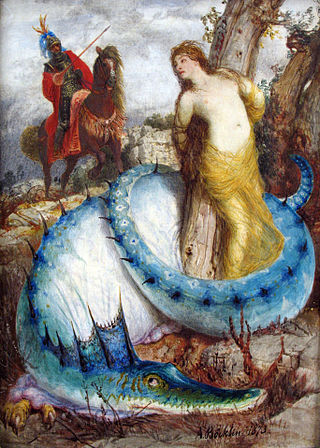
Roger Freeing Angelica is an oil painting executed in 1873 by Swiss symbolist painter Arnold Böcklin. The painting illustrates a scene from Ariosto's epic Orlando Furioso, in which the Muslim knight Roger saves the pagan princess Angelica from a sea monster. The motif is closely related to the mythological theme of Perseus saving Andromeda.

Angelica e Medoro is a 1720 serenata by Nicola Porpora to libretto by Metastasio, after Ludovico Ariosto. The opera, written to celebrate the birthday of the Habsburg emperor, Charles VI and performed 28 August 1720 Naples, Palazzo del Principe di Torella, marked the debut of the castrato Farinelli.
L'Angelica is a serenata by João de Sousa Carvalho to a libretto by Metastasio previously set by other composers. The plot concerns how Angelica thwarts the noble Orlando and elopes with Medoro. The 1720 serenata Angelica e Medoro by Nicola Porpora is a setting of the same libretto.




